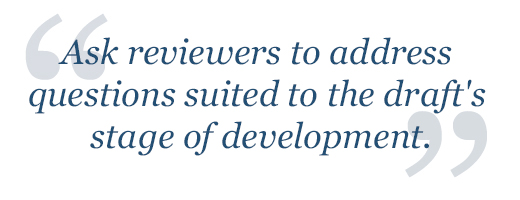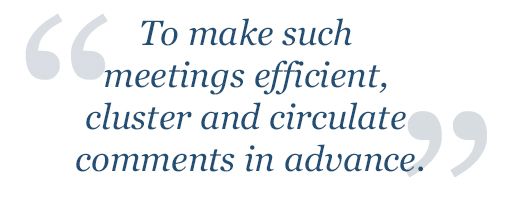Pharma is a document-intensive industry, but despite innovation throughout the drug development process, document review is often inefficient. Compared to placebo, endless review cycles lack favorable risk-benefit. Too often, two heads—or many more—do not seem better than one. Indeed, headache is sometimes the only reliable outcome of putting multiple heads together to review documents.
Key regulatory documents are typically cross-functional team products; representatives from different departments review them, sometimes repeatedly, as they develop. In theory, teamwork promises to produce a communication enhanced by all relevant perspectives. In practice, however, group review can become a case of too many cooks in the kitchen, each following his or her own recipe. Too often the result suits no one's tastes or intentions, creating frustration, wasting time, and, worst of all, compromising effective communication.
An author of our acquaintance described the dilemma this way: After taking a document through a few iterations, he distributed an advanced draft for review. When comments came in, he was near despair. Two readers dealt only with language, tinkering here and there with core messages. Three suggested a reorganization, each different from the others. One objected to the absence of certain data, while two others criticized how the data presented were interpreted (without offering suggested revisions). A final reviewer pronounced the document ready for sign off. Trying to merge the responses, the author couldn't be certain which suggestions to incorporate or how to reconcile contradictory ones.
What went wrong? In this case, the author and his team failed to apply several best practices for conducting an effective review, all of which provide focus and direction to the collaborative process.
What helps a review go right?
Before creating an initial draft, the lead author should get agreement from primary stakeholders on the document strategy: the major messages, the relevant issues and effective responses to them. This might be done through a MIRS table or strategic grid. Since pharma documents are often initiated before final data are known, buy-in may be high-level but is still sufficient to produce a prototype (or shell) that then allows consensus on document structure.
High-level prototypes are the best forum for debating document design. Structure is clearer and more easily adjusted before significant time and emotion are invested in fully developed text. For the same reason, architects experiment with blueprints, rather than rearrange brick-and-mortar homes.
Reaching early agreement on organization and core content requires all stakeholders to think through the purpose of the document and how it will achieve that purpose. This agreement provides all a common touchstone to evaluate subsequent drafts.

Assign Responsibilities Suited to the Stage
Review should provide what the author needs, not whatever the reviewer happens to notice.
When circulating a draft, the author should focus each reader's responsibility by asking for feedback on specific areas and from specific individuals. It is strategic to ask questions that require reviewers to move beyond page-by-page feedback and consider sections or the document as a whole.
To help the author integrate feedback, use technology that allows reviewers to see and discuss each other's feedback. When multiple experts from the same department are reviewing, they should provide consolidated feedback so that the author does not become a referee in functional tensions.
The most helpful comments result when reviewers are asked to address questions suited to the draft's stage of development. Early reviews focus attention on macro concerns: Is the purpose of the document clear? Is the structure effective? Are messages, issues, and responses presented logically? Is the structure effective? Is proposed support sufficient?
Only in later reviews might the author invite feedback on finer points of language, cohesion, and completeness.
Later reviews should also request "red thread" assessments, which ensure messages run consistently throughout and between communications. Pharma documents rarely stand alone and typically form part of larger submissions such as complex New Drug Applications. Alignment among multiple parts is easily lost when refining individual components. When the same message is expressed in subtly, or dramatically, different ways, regulatory readers may stop reading and return questions – or, worse, suspect spin has replaced solid science.
Documents that pass the red-thread test are far less likely to raise red flags.

Agree How Disagreement Will be Resolved
Finally, a group review must include a process to resolve contradictory suggestions. If no standard process exists, the group must design its own, one that allows members to identify concerns for further adjudication and provides a mechanism through which to settle differences. In some review teams, the primary author and his or her team are the ultimate deciders. In others it may be the Global Team Leader or Regulatory Head. Others choose to kick it all upstairs to the next level of management or over to an external team. But reviewers must agree on a stopping point, a decision point, to avoid what can otherwise become an endless loop of discussion and argument.
Schedule meetings in advance to address important differences to ensure rival reviewers will be present. To make such meetings efficient, cluster and circulate comments in advance and begin the meeting by prioritizing them.
It really doesn't matter how many cooks are in the kitchen as long as they adhere to a process that integrates their efforts and organizes their contributions. These strategies, these best practices, help teams to do both, easing the task of review not only for the author but for all members of the team. More importantly, a solid review process produces information and revision that increase document effectiveness. And document effectiveness, after all, is the point.





